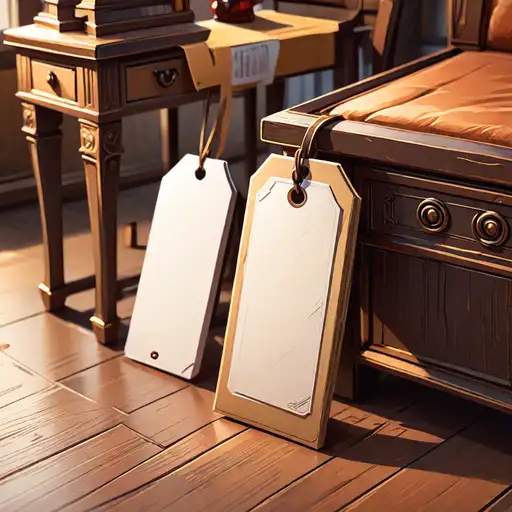Effective Pricing Strategies for Furniture Stores: Finding the Right Balance
Welcome to our in-depth guide on pricing strategies for furniture retailers! In today's competitive market, setting the right prices is crucial to your store's success. This blog page delves into the nuances of pricing, offering expert advice on how to balance profitability with customer satisfaction. From understanding cost structures and market trends to leveraging psychological pricing and discounts, we cover all the essential aspects to help you craft a winning pricing strategy. Whether you're looking to attract new customers, increase your average transaction value, or outshine your competitors, our comprehensive insights will equip you with the knowledge to make informed pricing decisions.

In the furniture industry, finding the right pricing strategy is crucial for maintaining profitability and providing value to customers. As a furniture store owner, navigating the complexities of pricing can be challenging, especially when trying to balance competitive pricing and maintaining quality service. In this post, we will explore effective pricing strategies for furniture stores and how utilizing a solid pricing plan you can find the right balance of price and value your customers will love.
When it comes to pricing furniture in your store, there are a lot of thoughts, factors, questions and answers that could impact your decision. What kind of store are you? Who are your customers? What do your customers care about? How low can I go, and still keep the lights on? All these questions are thoughts a lot of owners ponder when running their stores. These thoughts may not be organized, and my goal with this article is to help make sense of the things you are already thinking about, as well as organize your ideas in a way that might help you come to a strategy you feel more confident about. Maybe we can even identify some holes in your thought process and close them up while we are at it.
Ground Rules
For the sake of this discussion, lets agree on some terminology and basic calculations.
- Cost - what you pay for the furniture.
- Price - what you sell it for.
- Profit - price minus cost.
Rule: There are only 2 ways to increase your company’s profit.
- Sell to more customers.
- Make more profit from each customer you sell to.
The goal of your store is to keep the maximum amount of profit you can. A lot of retailers will brag about their total annual sales, but not be able to pay their bills at the end of the year. This usually can be attributed to 2 factors. They don’t make enough profit on each sale, and they don’t keep track of their numbers well enough to know where they are bleeding money. In this article, I will only address the first issue…. Not making enough profit on each sale.
Who do you want your customer to be?
Your pricing strategy is centered around one question, “Who do you want your customer to be?” This can be a complex or simple question to answer, but I want to point something very important out. I did not ask “Who IS your customer?” meaning currently/today. I asked “Who you WANT them TO BE?” in the future. Your brand, core values, mission statement, and how you do business determine whether you can sell to your desired customer.
Let me explain what I mean. When you are going to open your first store, and you are sitting at your kitchen table looking for your first location there SHOULD be a lot of factors that go into your decision, but the main question that needs to be answered is “Who do you want your customer to be?” If you want to deal with high-net-worth people, that expect great product, eye for design, attention to detail, and don’t mind paying a premium, you cannot get an unairconditioned warehouse in the bad part of town. If your store is in a high-end Galleria type area, don’t expect a lot of walk-ins from house cleaners, truck drivers, or college kids that pay their own way.
To be clear, you can make a ton of money from either demographic, and there are pluses and minuses to dealing with both. In fact, if you are dealing with the super high end or low end, you are probably not reading this article. The people reading this article, the people confused and wanting to improve, are probably the furniture store owners who deal with some combination of high, middle, low end or simply go straight after the middle tier of client. The crossover of the clients is what gets really confusing.
Let’s state the obvious. If you are selling a $15,000 sofa, your customers expect more than just a sofa. They want every interaction to be with people they love to deal with. Everyone better be smiling, speak their native language, know about the product, and have a propensity for kindness and problem solving. This client will focus on you running your business and providing service the way you say you do. For this they are willing to pay a premium. If you say you will deliver at 2:00PM on Saturday, you can’t call them at 4:00PM and tell them the guys are running late, and you will have to reschedule for another day.
If you are selling a $350 sofa, the customer will probably be happy if they don’t have to load the sofa themselves on top of their Honda Civic, and if they do have to load it, but you can provide some rope, it is all good.
So, if you are going after a combination of tiers or simply the middle tier customer, how do you decide what pricing strategy to implement?
Most stores start with Competitive Pricing. They look at what common products they and their competitors sell, shop the competitors secretly or by looking at adds, and then price 5-10% lower than the competition. This helps the retailer remain competitive, after all, you can show the competitors add at your sales desk and stand proudly on your current price, and it is so easy to research. Just go to their website or pull up their newspaper ads. There are some major downfalls to this strategy as well. It will definitely lead to price wars with the competitor. They will find out about it, and then lower their price. When they do that, are you going to lower your price again? At what point is it better to simply not make the sale, and let the competitor make the deal? When you price off your competition, you are not considering that your businesses are NOT identical. What if they have 4 salespeople and you have 15? What if their warehouse is half the size of yours? What if they are buying the product in containers, and your sales volume does not support that? Their cost on the same items will be less. When you are deciding on price, do Market Research. See what your competition is selling identical items for and make note of it. Your mission IS NOT to beat your competitions price all the time, and remember, if you are selling on PRICE, you are already losing.
Try to start selling on Value-Based Pricing. This is where you charge a premium on what your customer VALUES the most. Remember, value is what someone is willing to pay for something. When people are buying value, what are they paying for? Here are some items you can work into your sales pitch, to show increased value. If your salespeople are skilled enough, they can sell value of purchasing from you over buying from your cheaper competition, and the customer will be happy to pay more, and still feel like they won in the transaction.
Value Adds in furniture retail
Remember: Not all customers care about the same things. A good salesperson will be able to determine the customer’s priorities, and then present the sale in the way that they want to buy. Use the a la carte approach here. When people are buying value, they are paying for a combination of things that enhance their overall experience before, during, and after the sale.
- Quality: The durability, reliability, and performance of the product.
- Examples:
- This product will be in your family for generations.
- Look at the dove tail finishing. Very few manufacturers put this much attention into details.
- Convenience: Ease of purchase, delivery, and installation.
- Examples:
- You buy this sofa tonight; we will have it in your house tomorrow.
- Your house is getting painted? No problem, we will store it for you until you call us and ask for delivery.
- Brand Reputation: Trust and credibility built by the brand over time.
- Examples:
- We have been in business for over 25 years. You know that if there is a problem, I will be at this desk next week, just like I have been for the past 10 years.
- You know us.
- We do what we say.
- We are in the community. We sponsor the football team.
- Features and Benefits: Specific attributes that meet the buyer's needs and preferences.
- Examples:
- This mattress is memory foam with cool technology. It will keep you cool during those hot Texas summers.
- This sofa is made with goose feathers which are proven better than duck feathers.
- Emotional Appeal: The emotional connection or status associated with the product.
- Examples:
- Your husband will love this.
- Your friends will be jealous of the high-end furniture in your home.
- Innovation: New and unique features that set the product apart from competitors.
- Examples:
- This mattress was designed by NASA.
- This mattress foundation has a Honda motor in it and is adjustable 37 different ways.
- User Experience: How user-friendly and enjoyable the product is to use, and store is to do business with.
- Examples:
- Your back will feel amazing tomorrow. What is a good night sleep worth?
- You don’t even have to come back into our store to make layaway payments. Just go on our website, log in, and everything will be handled in your living room on your cell phone.
- Sustainability: Environmental and ethical considerations that align with the buyer's values.
- Examples:
- This is made from bamboo, that regenerates in 7 days.
- This rug is made from recycled water bottles.
Considerations for Implementing Pricing Strategies
- Market Research: Understand your target market, their price sensitivity, and what they value in furniture.
- Cost Analysis: Ensure all costs are covered and profitability is maintained.
- Competitor Analysis: Regularly monitor competitor pricing and market trends.
- Customer Feedback: Use feedback to gauge how customers perceive your pricing.
- Technology and Tools: Leverage pricing software to analyze data and optimize pricing strategies.
Common Pricing Challenges for Furniture Stores
Many furniture store owners struggle with pricing due to a lack of understanding of their business operations and market dynamics. Common challenges include:
- Inconsistent Pricing: Using different prices for similar products leads to customer confusion. NOTE: Don’t forget about having a point-of-sale system, a kiosk, and a website that all have different prices for the same SKUs. This will throw your sales into a spiral and have you competing with yourself. All your prices need to match everywhere.
- Underpricing: Lowering prices too much, reducing profitability and perceived value.
- Overpricing: Setting prices too high, driving customers to competitors.
EZ Process Pro Software addresses these challenges by providing a ton of tools to manage and automate your business (sales and operations.) This ensures consistency across all of your business and sales platforms automatically.
Tips for Implementing Effective Pricing Strategies
Here are some practical tips for finding the right pricing balance:
- Know Your Costs: Ensure you understand all costs involved in bringing a product to market and selling it to your customer. Don’t forget rent, commission, advertising, and insurance.
- Understand Your Market: Research competitors and understand your customers’ willingness to pay, and what they care about the most.
- Use Data: Leverage your furniture software’s data analytics to inform pricing decisions.
- Test and Adjust: Experiment with different pricing strategies and adjust based on performance.
- Communicate Value: Clearly articulate the value of your products and services to justify your prices.
- Training: As the products, customers, and industry change, make sure you and your team are up to date on what technology goes into what you are selling, and how to present it to the customer in a way that they can understand it, and buy it.
Conclusion
Effective pricing is about finding the right balance between competitiveness and profitability. By thinking about these things, a furniture store can figure out the best prices for their stuff and make their products seem more valuable without making them more expensive. This way, customers will keep coming back, the store will become well-known and liked, and they will sell more and make more money.
Ready to optimize your pricing strategy? Explore EZ Process Pro, and if you think it could be a good fit for your business, request a demo today. Let’s determine together if we can transform your business by implementing furniture software, and make it more fun and profitable to be in the furniture business.
Challenge
The biggest challenge with keeping an accurate inventory count for a furniture store is the sheer complexity and variety of the products involved. Furniture stores typically carry a wide range of items, including different types of furniture pieces, designs, sizes, colors, and materials.
Solution
Invest in a comprehensive inventory management software that is specifically designed for furniture stores. Such a system can help track stock levels, monitor sales, manage returns, and update inventory counts in real-time across all sales channels.

We have been doing this for over 20 years!
- We will show you how to make decisions using data.
- We will show you the steps to run a furniture store to maximize PROFIT, not simply increase sales.
- The software lays out your employees days. Everyone knows what they are expected to do, and how to do it.
- Sell the inventory you have in stock. Your money should be in your bank account, and not in your warehouse.
- Spend more time working on your business, and not in it.
- We will show you how to make decisions using data
- We will show you the steps to run a furniture store to maximize PROFIT, not simply increase sales.
- The software lays out your employees days. Everyone knows what they are expected to do, and how to do it.
- Sell the inventory you have in stock. Your money should be in your bank account, and not in your warehouse.
- Spend more time working on your business, and not in it.
I would recommend this software to most any company. In a company like mine, you get in the habit of doing things the same way you always have, and it will lead to your demise. Now we are more organized in my 100 year old company than we have ever been!. The software saves me a ton of money. If you are unsure about your future in this industry of big box companies, EZ Process Pro is a step in the right direction. It keeps you relevant. I feel at ease leaving my store. I can access information from wherever I am. I feel liberated!

Scotty Akins
Akins Furniture & Dogtown West
I have had the opportunity to work with and use many Management Systems. When I found EZ Process Pro I was blown away with its intuitive and logical processes. This system does it all. The level of reporting and integrated systems make this software the best their is. It is cloud based so no heavy software to download and update on my network. With their out of scope processing solutions I now have no fear accepting credit cards as the software never touches the card data. Just when I thought it couldn't get better they have developed an integrated website management system that ties online inventory, finance, and order management into the core POS system allowing for a single point of update and management across all platforms. This is truly an omni-commerce solution for the Furniture Industry. I am so happy I made the change to EZ Process Pro it has changed my business for the better!

Joe Vagneur
Colorado SuperNova Furniture
 EZ Process Pro
EZ Process Pro